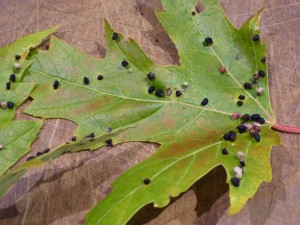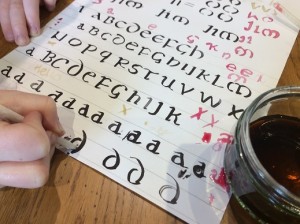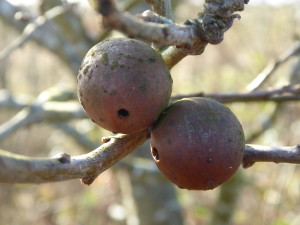What are those strange lumps and bumps on the underside of some leaves and those odd-shaped growths on acorns that look like woody asteroids? These bizarre plant growths become more noticeable in the autumn amongst the piles of fallen leaves, and on now naked tree branches and twigs. Read on for the answer and some fun detecting and activity ideas.
![Answer: plant galls [Robin’s pin cushion, growing on a Dog Rose]](http://www.wildheritage.co.uk/wp-content/uploads/2017/11/Robins-pin-cushion-300x225.jpg)

Most galls are found on oak trees which are made by several species of gall wasps (cynipid wasps, over 30 species). Look on the underside of leaves for: smooth spangle galls (flat discs), button galls (depression in centre) and large round cherry galls. Most well-known are ’oak apples’ – large round galls (up to 2cm in diameter) that develop on twigs, often in clusters. Eggs laid inside growing acorns produce a knobbly shaped woody ’asteroid’, where a single acorn or knopper gall wasp lava develops. In autumn, these galls turn reddish brown and drop from the trees, where the lava overwinter safe within the shelter and protection of the gall and pupate next spring – ready to start the life cycle all over again.
Galls cause no damage to the plant, but without galls these insects would not survive the winter. Strange but true! Here are some investigations to get you started.
Gall hunt: Look for and collect a variety of different shaped galls. Who can find the largest or weirdest gall? Can you spot the tiny exit hole from where the wasp has emerged from an oak apple or knopper gall? These can be carefully cut in half to study the tunnel and chamber inside. Don’t damage galls without holes as the larvae inside is overwintering and will emerge in the spring.
Study galls up close: In early spring, collect oak apples without holes. These can be put into a jar with fine netting on top, kept in place with an elastic band. The developing larvae should emerge in a month. Children can then observe the tiny gall wasps, which are only the size of small ants, then release!
Imaginative writing: Write a poem or short story about what it would be like to be a gall insect inside its temporary but special home. Eat, rest and eat again – how do you know when it’s time to change – to stretch and move and escape from your gall? You now have wings!
Did you know? The Charter of the Forest (1217) was written in iron gall ink. The purple-black or brown-black ink was used from the 5th century to the 19th century as a permanent and water-resistant ink for writing royal and legal records. Oak apples are high in tannin and when mixed with ferrous sulphate (or a rusty nail), gum Arabic and water this makes iron gall ink. In the New Forest Centre, until January 12th, there is an exhibition about the Charter of the Forest and how it has shaped the forests and woods of the present day.


